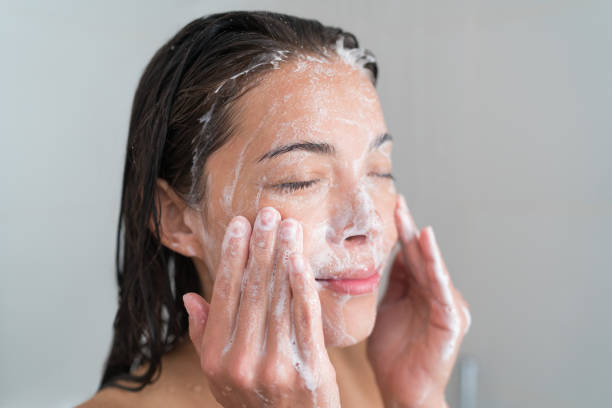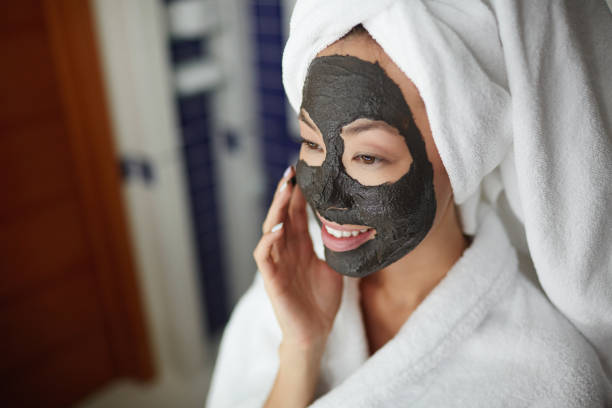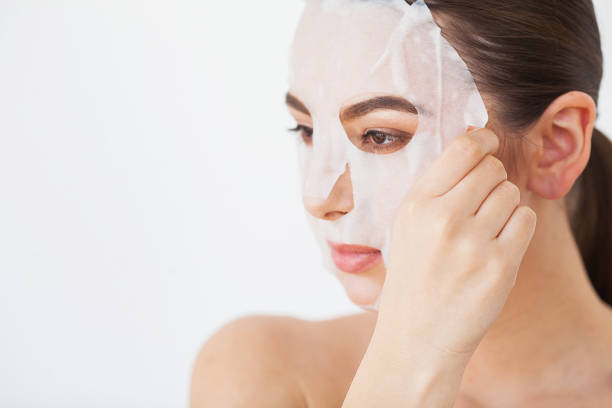
Daily Skincare Routine to Prevent Acne Flare-Ups
Acne flare-ups aren’t just a teenage problem. They can pop up at any age and leave you feeling self-conscious, frustrated, and ready to hide under a hoodie. Flare-ups can come out of nowhere, often right before important events or when stress levels are sky-high. That surprise breakout is not just skin-deep—it can affect your mood, confidence, and even how you show up in the world.
But what if you could stop those breakouts before they even begin?
Flare-ups usually happen when something throws your skin out of balance—whether it’s hormones, bacteria, clogged pores, or just the wrong face wash. The good news? A consistent, well-thought-out skincare routine for acne-prone skin can help you keep things calm, clear, and confidently under control.
In this guide, we’ll explore how to create a daily acne skincare routine that works with your skin—not against it. From morning to night (and everything in between), we’ve got you covered with expert-approved steps, product advice, and realistic habits that help. And if you're looking for more targeted treatments, don't forget to explore our IPL Acne Reduction: Venus Versa for Stubborn Breakouts guide, or if stress and hormones are your skin’s biggest trigger, our Lifestyle Hacks to Reduce Hormonal and Stress-Induced Acne might be just what you need.
Understanding the Root Causes of Acne Flare-Ups
Excess Oil Production and Clogged Pores
Your skin naturally produces oil (aka sebum) to stay moisturized and protected, but too much of a good thing can spell trouble. When excess oil mixes with dead skin cells, it can block your pores. These clogged pores are the perfect environment for acne to thrive—especially in warmer climates or during hormonal shifts. Regular cleansing and exfoliation help keep pores clear, but balance is key—you don’t want to strip the skin too much, or it will overcompensate with even more oil.
Bacteria and Inflammation
Everyone has some amount of Cutibacterium acnes (formerly P. acnes) on their skin. The trouble starts when this bacteria gets trapped in clogged pores. The body’s immune response kicks in, leading to inflammation—those red, swollen bumps that hurt when you touch them. The more inflamed the breakout, the more likely it is to scar. This is why reducing bacteria and calming inflammation is such an important part of any acne-fighting routine.
Hormonal Fluctuations and Lifestyle Triggers
Hormonal changes are a major driver of breakouts. Whether it’s during puberty, menstruation, pregnancy, or periods of high stress, your hormones can tell your oil glands to go into overdrive. And it doesn’t stop there—poor sleep, sugary diets, dehydration, and even overexercising can also throw your hormones out of whack, increasing your chances of flare-ups. Identifying these triggers is half the battle.
Skincare Mistakes That Can Worsen Acne
You might be trying to help your skin—but are actually hurting it. Over-cleansing, skipping moisturizer, layering too many actives, or using products with pore-clogging ingredients are common mistakes. It’s tempting to scrub your face into submission when a breakout hits, but this only aggravates your skin. A calmer, more strategic approach works better in the long run.
Key Principles of an Acne-Prevention Skincare Routine
Consistency is Key
Think of skincare like going to the gym—it only works if you stick with it. The most effective skincare routines aren’t the most complicated—they’re the ones you actually do every day. Commit to your routine, give your skin time to adjust, and don’t expect miracles overnight. Most products take at least 4–6 weeks to show visible results. Patience and persistence will always pay off.
Use Non-Comedogenic and Fragrance-Free Products
Non-comedogenic means the product won’t clog your pores. That’s a must for acne-prone skin. Fragrance may smell nice, but it can be a hidden irritant that throws your skin into chaos—especially if your barrier is already compromised. When in doubt, keep it simple, clean, and focused on performance over scent.
Avoid Over-Exfoliating or Harsh Ingredients
Exfoliation helps remove dead skin and keep pores clean—but more is not better. Harsh scrubs and overuse of acids can damage your barrier, leading to more breakouts, redness, and dryness. Limit exfoliation to 2–3 times a week with gentle acids like BHA or lactic acid, and avoid gritty exfoliants that can create microtears.
Balance Hydration and Oil Control
Hydration is your skin’s BFF—even if you’re oily. Dehydrated skin can produce more oil to compensate, leading to even worse breakouts. Look for water-based or gel moisturizers with hyaluronic acid, glycerin, and ceramides to restore moisture without clogging pores.
Morning Skincare Routine to Prevent Acne
Step 1: Gentle, Sulfate-Free Cleanser
A good cleanser should remove sweat and oil buildup from the night before without leaving your skin feeling tight or squeaky. Sulfates (like sodium lauryl sulfate) are too harsh for daily use and can lead to increased oil production. Choose a gel or foam cleanser with salicylic acid or tea tree oil to gently purify the skin.
Step 2: Toner (Optional)
A toner can help balance your skin’s pH and prepare it to absorb serums better. If your skin gets red or irritated easily, go for soothing ingredients like witch hazel, rose water, or green tea. This step is optional—but helpful for oilier or acne-prone skin.
Step 3: Lightweight Acne Serum or Treatment
Your morning serum is your first line of defense. Use ingredients like:
Niacinamide to reduce oil and inflammation
Salicylic acid to unclog pores
Azelaic acid for redness and bacteria control
Layer this before your moisturizer and sunscreen.
Step 4: Oil-Free Moisturizer
Moisturizing keeps your skin hydrated and healthy—skipping it can cause dehydration and lead to more oil. Go for oil-free, non-comedogenic formulas with ingredients like:
Hyaluronic acid for hydration
Ceramides to strengthen your barrier
Centella asiatica to calm inflammation
Step 5: Broad-Spectrum Sunscreen (SPF 30+)
Sunscreen is non-negotiable. UV damage worsens acne scars and dark spots. Choose a sunscreen made for acne-prone skin: oil-free, gel-based, and mineral if possible. This is also your best defense against post-inflammatory hyperpigmentation.
Evening Skincare Routine to Prevent Acne Flare-Ups
Step 1: Double Cleanse (Oil Cleanser + Gentle Cleanser)
Double cleansing at night ensures you fully remove sunscreen, makeup, and excess oil. Start with an oil-based cleanser to dissolve product buildup, then follow with your morning gentle cleanser. This method prevents clogged pores and ensures your skin can absorb treatment products effectively.
Step 2: Spot Treatments or Active Serums
Apply spot treatments to active pimples or rotate in a treatment serum a few nights per week. Key actives include:
Benzoyl peroxide for bacteria and inflammation
Adapalene or retinoids to prevent future breakouts
Salicylic acid for ongoing oil control
Alternate these treatments to avoid overwhelming your skin.
Step 3: Balancing Toner or Hydrating Mist
Follow up your active step with a balancing toner or mist to restore hydration. Rose water, panthenol, and centella are ideal here. This helps maintain your moisture barrier while minimizing the risk of dryness or peeling from actives.
Step 4: Barrier-Reinforcing Moisturizer
At night, your skin repairs itself—so give it the tools it needs. Choose a moisturizer with:
Peptides for repair
Niacinamide for inflammation
Ceramides to restore your barrier
If your skin is especially dry, you can seal everything in with a non-comedogenic oil like squalane.
Weekly Add-Ons for Clearer Skin
Your daily routine forms the foundation, but sometimes your skin needs a little extra care. That’s where weekly add-ons come in. Think of these as your “maintenance crew”—they help you tackle deeper issues like congestion, excess oil, and post-acne marks before they turn into full-blown flare-ups.
Gentle Exfoliation (1–2 Times/Week)

Exfoliating once or twice a week can work wonders, but only if you do it gently. Chemical exfoliants like salicylic acid (BHA) or enzyme-based peels help dissolve dead skin cells that can clog pores. Unlike physical scrubs, which can be too abrasive for acne-prone skin, chemical exfoliants reach deeper into pores without causing microtears.
Start slow—once a week—and gradually build up if your skin tolerates it. After exfoliating, always follow with a soothing moisturizer to help your skin recover. Look for exfoliants with added calming ingredients like green tea, chamomile, or allantoin.
Clay or Charcoal Masks

shironosov via Pexels
Got oily skin or persistent clogged pores? Enter clay and charcoal masks. These work like a vacuum for your skin, drawing out impurities, excess sebum, and debris from your pores. Use them once a week or the night before a big event to help shrink the appearance of pores and control shine.
Kaolin clay is gentle and perfect for sensitive skin.
Bentonite clay is a powerhouse for soaking up oil and impurities.
Charcoal masks help detoxify and reduce surface bacteria.
Make sure to apply only on problem areas (like the T-zone), and don’t let the mask over-dry—rinse off while it’s still slightly damp.
Hydrating or Calming Masks

Iurii Maksymiv via Pexels
If your skin’s been through the wringer—say, too many actives or environmental stress—soothing masks can help bring things back into balance. Ingredients like aloe vera, cucumber extract, and hyaluronic acid replenish hydration and calm redness. Sheet masks, gel masks, or even a thick overnight sleeping mask can deliver intensive moisture while reinforcing your barrier.
Use these masks on nights when you’re not using actives like retinoids or exfoliants, giving your skin a break and helping it bounce back stronger.
Skincare Habits That Help Prevent Acne Flare-Ups
Your routine isn’t just about the products—it’s also about the habits you build around your skincare. These seemingly small changes can make a huge difference over time.
Wash Pillowcases and Towels Regularly
Think about it: your pillowcase collects oil, bacteria, and residue from hair products every night. If you’re not washing it at least once or twice a week, you could be pressing all that grime into your face nightly. Use fragrance-free, hypoallergenic detergent and consider switching to a silk or satin pillowcase to minimize friction and irritation.
Avoid Touching Your Face Throughout the Day
Easier said than done, right? But touching your face transfers dirt and oil from your hands to your skin, increasing the risk of clogged pores and breakouts. Be mindful of this habit—especially when you’re stressed, tired, or bored. Keeping your hands busy or using a tissue to blot oil can help reduce face-touching.
Use Clean Tools and Applicators (Brushes, Sponges)
Makeup brushes and sponges are sneaky culprits behind acne. If you’re not cleaning them weekly, they can harbor bacteria and dead skin cells that contribute to breakouts. Wash brushes with a gentle soap or brush cleanser, and allow them to dry fully before using them again. For sponges, replace them every 1–2 months if used daily.
Avoid Popping or Picking Pimples
Yes, we’ve all been tempted. But popping pimples causes more harm than good—it pushes bacteria deeper, damages skin tissue, and increases the risk of scarring and dark spots. If a blemish needs urgent treatment, apply a hydrocolloid patch overnight or consult a dermatologist for a safe extraction.
Best Ingredients for Acne-Prone Skin
When it comes to managing acne-prone skin, using the right ingredients can make or break your results. Look for ingredients backed by science and proven to target the root causes of acne—whether it’s oil production, inflammation, or clogged pores. Here are the heroes you’ll want to keep an eye out for on your product labels:
Salicylic Acid – Unclogs Pores
A beta hydroxy acid (BHA), salicylic acid is oil-soluble, meaning it can penetrate deep into your pores to clear out dirt, oil, and dead skin cells. It’s particularly effective against blackheads and whiteheads and helps reduce inflammation. Look for it in cleansers, spot treatments, and toners. Start with a 0.5–2% concentration if you’re new to it.
Niacinamide – Reduces Inflammation and Controls Oil
Also known as Vitamin B3, niacinamide is a multitasking ingredient that calms inflammation, controls sebum production, and strengthens the skin barrier. It’s gentle enough for daily use and pairs well with other actives. Plus, it can help fade acne scars over time, making it great for post-breakout care.
Azelaic Acid – Antibacterial and Calming
If your skin is reactive, inflamed, or easily irritated, azelaic acid might be your match. It’s a naturally occurring acid that gently exfoliates, kills acne-causing bacteria, and soothes redness—especially useful for hormonal or rosacea-prone skin. Look for 10% concentrations in over-the-counter options, or ask your derm for a prescription strength.
Tea Tree Oil – Natural Anti-Acne Solution (Use Sparingly)
Tea tree oil is a plant-derived antiseptic that can reduce acne-causing bacteria. It’s great for spot treatments but should always be diluted with a carrier oil or mixed into a base product to avoid irritation. Use this with caution if you have sensitive skin.
Retinoids – Regulate Cell Turnover (Use Under Guidance)
Retinoids (like adapalene or tretinoin) increase cell turnover, helping prevent clogged pores and breakouts. They also smooth skin texture and help fade dark spots. However, they can be irritating at first, so it’s best to start slow—2 to 3 times a week—and always wear sunscreen the next day. Adapalene 0.1% (like Differin) is available over-the-counter, while stronger retinoids require a prescription.
Products to Avoid If You're Prone to Breakouts
Even if your routine includes all the right steps, a few wrong ingredients can still trigger breakouts or irritation. These are the most common culprits to watch out for:
Alcohol-Heavy Toners or Astringents
Products that list denatured alcohol, SD alcohol, or ethanol near the top of the ingredient list can be overly drying. While they might feel refreshing at first, they can strip your skin's natural oils, causing it to overproduce oil and worsening breakouts in the long run.
Heavy, Pore-Clogging Oils (Like Coconut Oil)
Not all oils are created equal. Coconut oil, wheat germ oil, and lanolin are comedogenic and can clog pores, especially for acne-prone skin. If you want to use facial oils, opt for non-comedogenic ones like squalane, hemp seed oil, or rosehip oil.
Harsh Scrubs or Physical Exfoliants
Scrubs with large, rough particles like apricot kernels or walnut shells can cause microtears in your skin and exacerbate inflammation. If your skin is sensitive or actively breaking out, these scrubs can make things worse. Stick to gentle chemical exfoliants instead.
Fragrance and Dyes in Skincare Products
Artificial fragrances and dyes don’t provide any skincare benefits and often irritate sensitive, acne-prone skin. Choose fragrance-free or naturally scented products (from ingredients like chamomile or calendula) to reduce the risk of reactions.
When to See a Dermatologist
While an at-home skincare routine can do wonders for mild to moderate acne, there are times when professional help is not just helpful—but necessary. If your acne isn’t improving despite consistent effort, it may be time to call in a dermatologist.
Signs Your Acne May Need Prescription Treatment
Severe or cystic acne that’s painful, deep under the skin, or leaves marks.
Frequent flare-ups that don't respond to over-the-counter treatments.
Persistent dark spots or scarring that aren't fading over time.
Signs of skin barrier damage, such as excessive dryness, redness, or sensitivity
A dermatologist can help identify the root cause of your breakouts and prescribe stronger medications like oral antibiotics, retinoids, or hormone-regulating treatments. They can also perform professional procedures like chemical peels, light therapy (such as IPL Acne Reduction: Venus Versa for Stubborn Breakouts), or extractions when needed.
Importance of Tailoring Your Routine to Your Skin Type
Acne isn't one-size-fits-all. What works for your friend might not work for you—and that’s okay. Your skin's needs may vary depending on factors like genetics, hormones, diet, stress, and even the climate where you live. That’s why seeing a dermatologist can help you build a customized routine that addresses your unique concerns with precision and care.
Your Skincare Game Plan
Dealing with acne can be frustrating, but it doesn’t have to feel impossible. With the right daily acne skincare routine, gentle yet effective ingredients, and a few mindful habits, you can prevent most flare-ups before they even start. Remember: prevention is always better than panic-mode correction.
Stay patient and kind to your skin. Progress may take time, but consistency is your secret weapon. Don’t be discouraged by a bad skin day—it's part of the journey.
And if your acne needs extra support, consider looking into more advanced options like IPL Acne Reduction: Venus Versa for Stubborn Breakouts, or explore lifestyle shifts in Lifestyle Hacks to Reduce Hormonal and Stress-Induced Acne. Together, these resources offer a holistic toolkit to keep your skin clear, confident, and glowing.
FAQ: Daily Skincare for Acne Prevention
How long does it take to see results from a skincare routine?
Typically, you’ll start to see improvements in 4 to 6 weeks, depending on your skin type and the ingredients used. Some active treatments, like retinoids, may take up to 12 weeks for full results.
Can oily skin still use moisturizers?
Absolutely! Oily skin still needs hydration. Choose a lightweight, oil-free moisturizer with ingredients like hyaluronic acid or glycerin to balance your skin without clogging pores.
Is it safe to use makeup with acne-prone skin?
Yes—just be sure to choose non-comedogenic and fragrance-free makeup products. Also, thoroughly cleanse your face at night to remove all traces of makeup.
What’s the difference between whiteheads, blackheads, and cystic acne?
Whiteheads are closed clogged pores.
Blackheads are open pores clogged with debris that darken from air exposure.
Cystic acne forms deep under the skin, often painful and inflamed.
Each type may need different treatments, so identifying them helps you target more effectively.
Should I exfoliate if I have active breakouts?
Yes—but gently. Use chemical exfoliants like salicylic acid instead of scrubs. Exfoliating helps clear dead skin, but overdoing it can worsen inflammation. Stick to once or twice a week.
Need help building your acne-clearing plan? Explore our full guide: Acne & Clear Skin Treatments – for deeper insight into routines, treatments, and lifestyle changes that work together to give you healthier skin.
References for this Information
Kircik, L. H., Del Rosso, J. Q., & Layton, A. M. (2016). Over-the-counter (OTC) acne treatments: Insights on efficacy and safety. The Journal of Clinical and Aesthetic Dermatology, 9(5), 40–47. https://www.ncbi.nlm.nih.gov/pmc/articles/PMC4949006/
Zaenglein, A. L., Pathy, A. L., Schlosser, B. J., Alikhan, A., Baldwin, H. E., Berson, D. S., ... & Bhushan, R. (2016). Guidelines of care for the management of acne vulgaris. Journal of the American Academy of Dermatology, 74(5), 945–973.e33. https://doi.org/10.1016/j.jaad.2015.12.037
Smith, R. N., Mann, N. J., Braue, A., Mäkeläinen, H., & Varigos, G. A. (2007). A low-glycemic-load diet improves symptoms in acne vulgaris patients: A randomized controlled trial. The American Journal of Clinical Nutrition, 86(1), 107–115. https://doi.org/10.1093/ajcn/86.1.107


Comments
0 comments